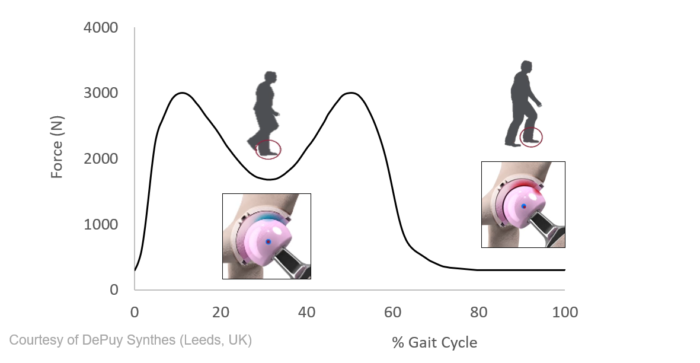A rapid industrial test for new hip replacement designs

A five-year project, focused on improving precision of hip replacement device design and surgical practice, has resulted in a virtual test being used in the industrial product development process.
In recent years there has been a move towards analysing hip replacement devices under adverse mechanical conditions, in order to establish their robustness to the wide variety conditions that can happen in the human body. This includes a scenario where the two parts of the artificial joint slightly separate, creating high pressures at the edge of the device, which is termed “edge loading”.
The computational tool allows a device to be rapidly tested under a large number of loading conditions to assess relative severity of edge loading outcomes. It was developed by postdoctoral researcher Lee Etchels as part of an EPSRC Healthcare Impact Partnership grant. The impact-focused nature of the grant funding facilitated the collaboration with DePuy Synthes Joint Reconstruction (Leeds, UK) and made it possible to embed the tool within an active product development and testing cycle.
The tool has been tested in a live product development project, with the immediate benefit of reducing the resource needed for physical testing and the potential to be embedded in a product optimisation cycle. This final stage was facilitated by the development of a user interface and automated data plotting by undergraduate Isaac Campbell, employed through the summer research internship scheme.
The wider project is led by Prof Ruth Wilcox, along with Prof Sophie Williams, Prof Philip Conaghan, Prof John Fisher and Dr Alison Jones.
Links:
Project listing on EPSRC Grants on the Web:
https://gow.epsrc.ukri.org/NGBOViewGrant.aspx?GrantRef=EP/N02480X/1
The publication covering the tool development and validation:
https://www.sciencedirect.com/science/article/pii/S0021929019305020
Undergraduate Summer Internship Scheme:
https://eps.leeds.ac.uk/mechanical-engineering-undergraduate/doc/careers-employability-1/page/3
